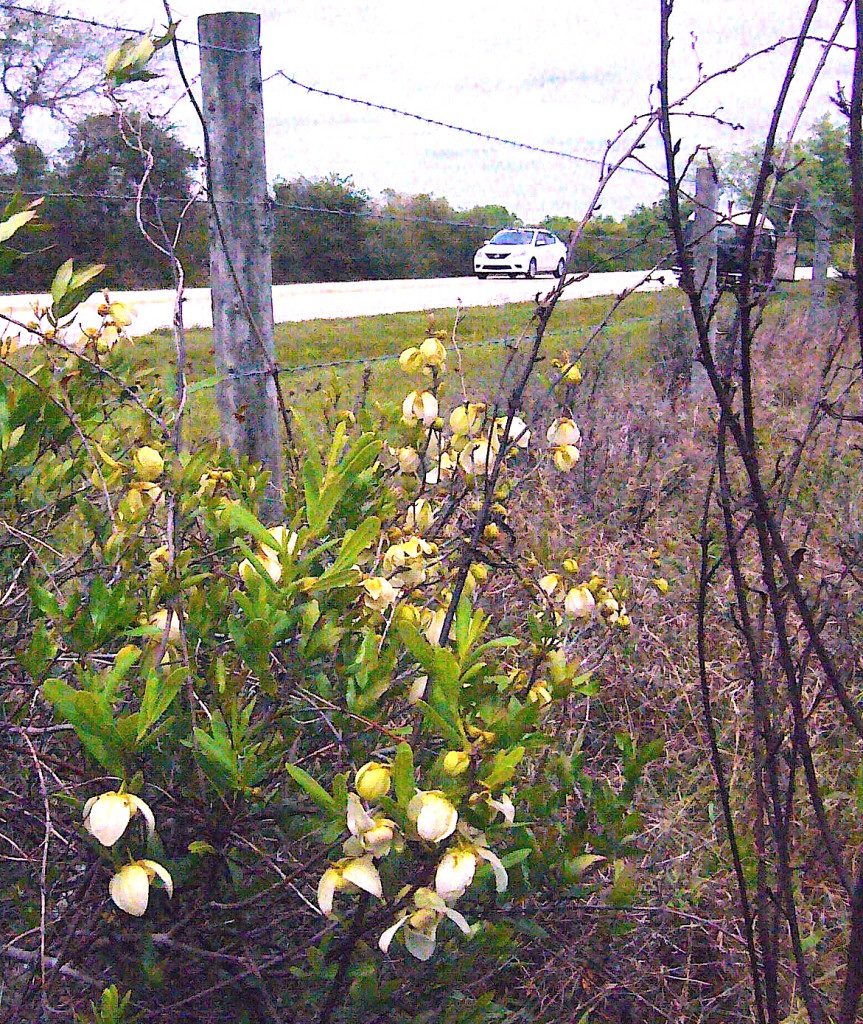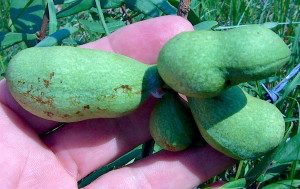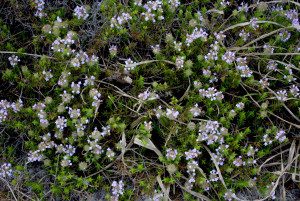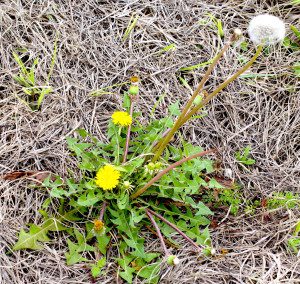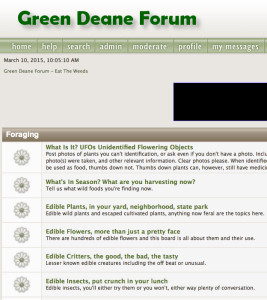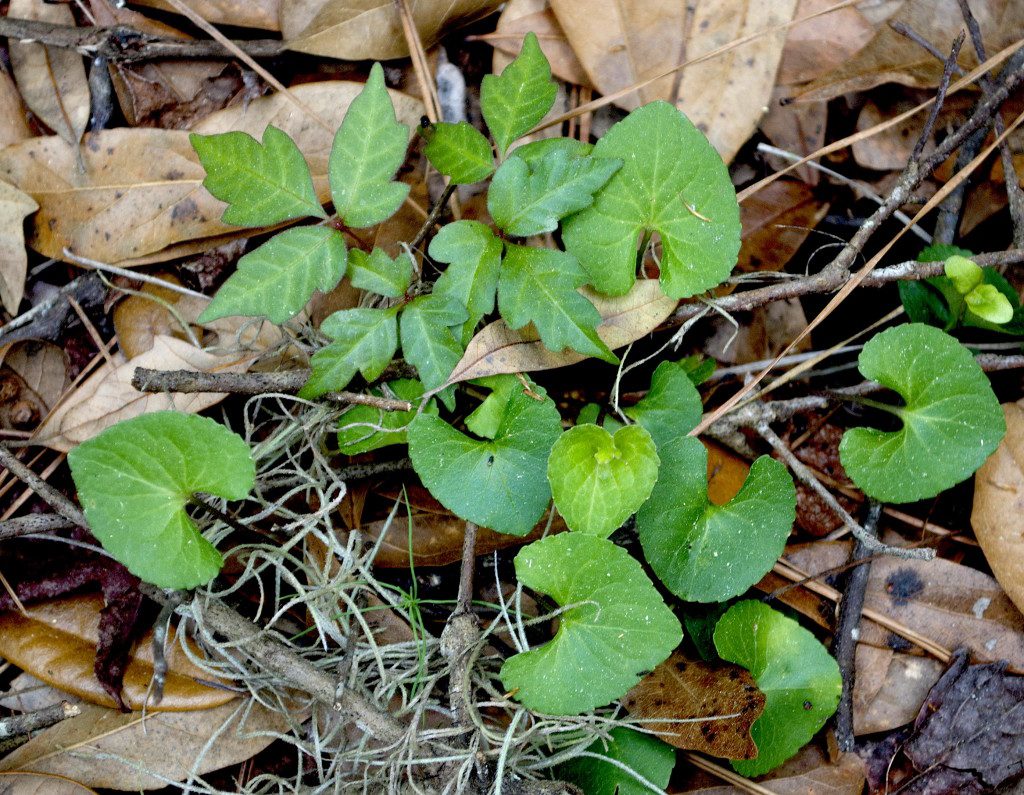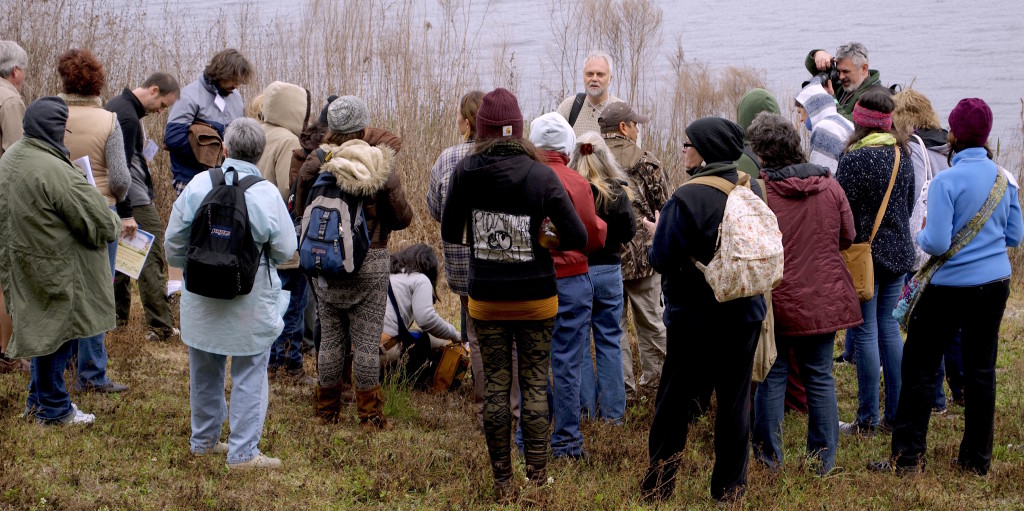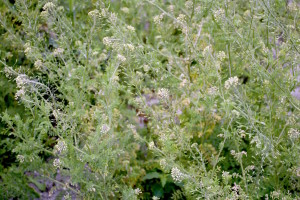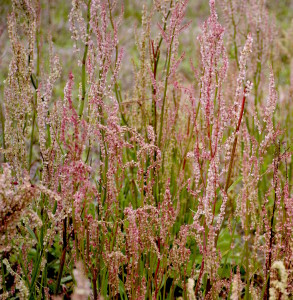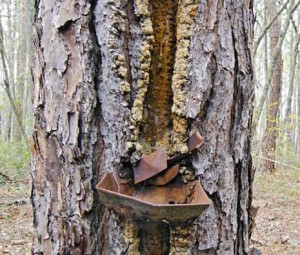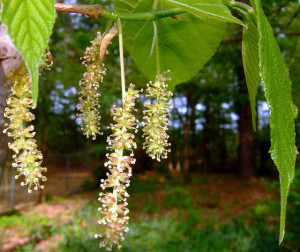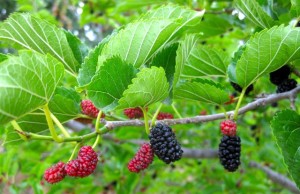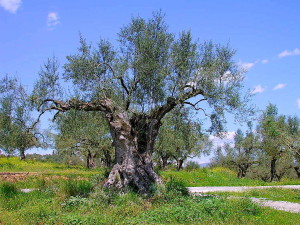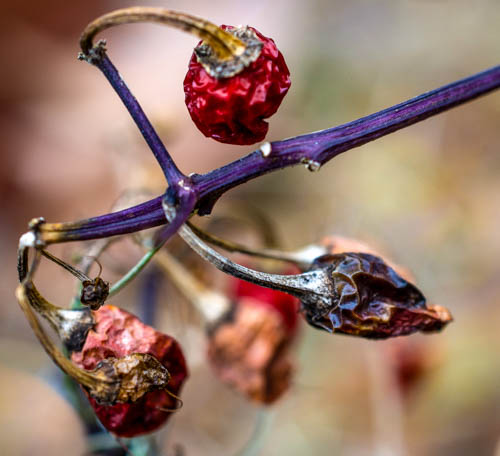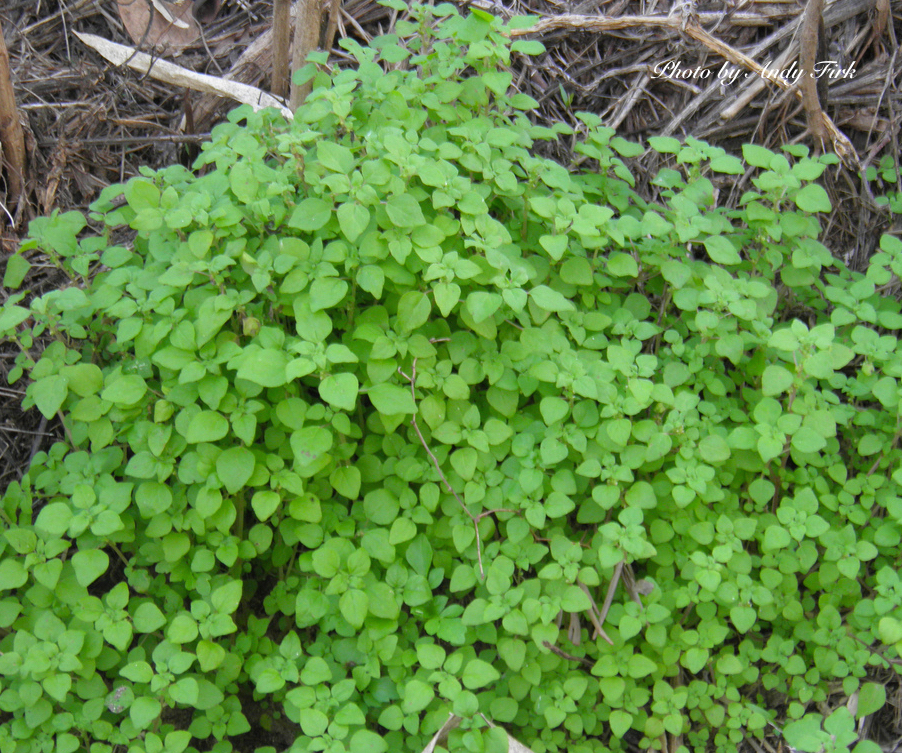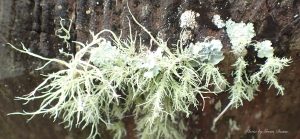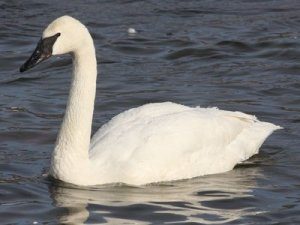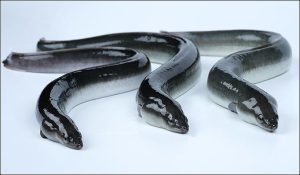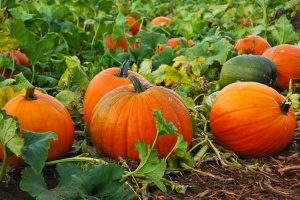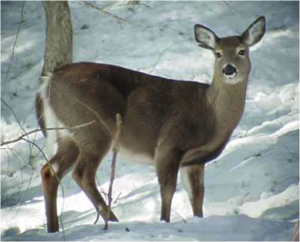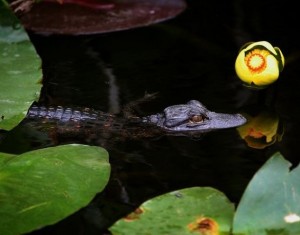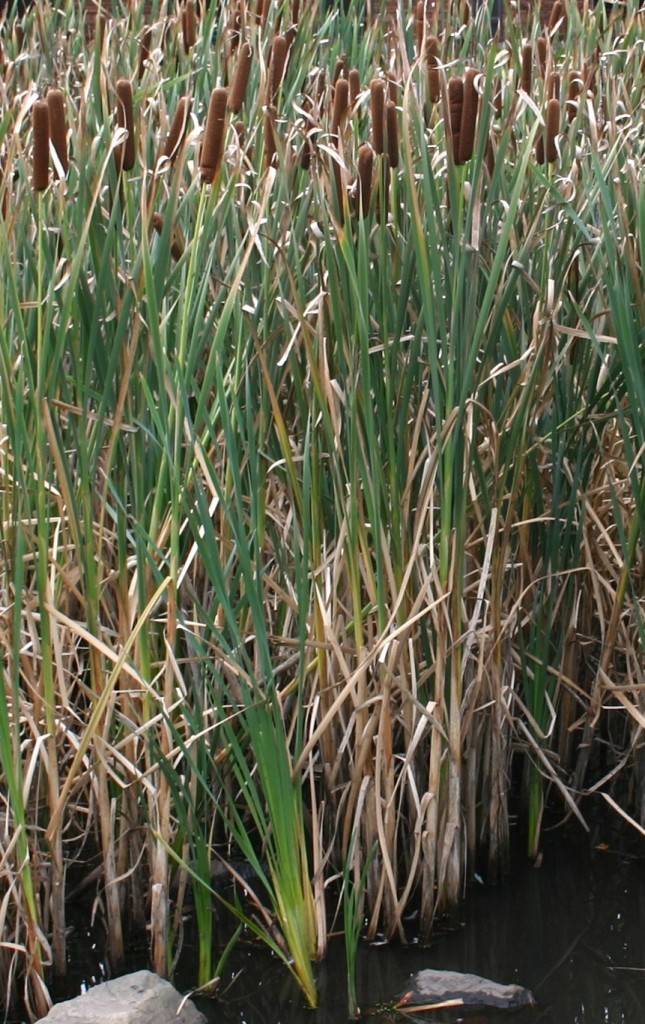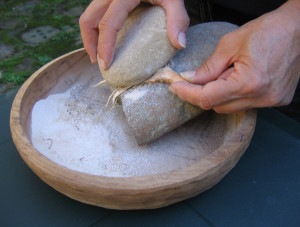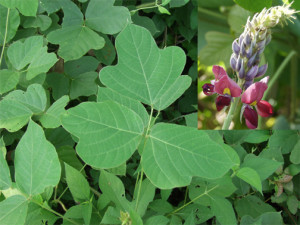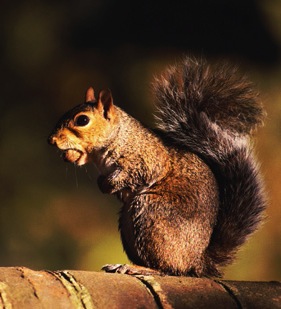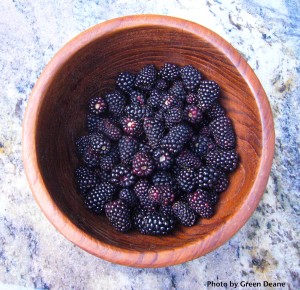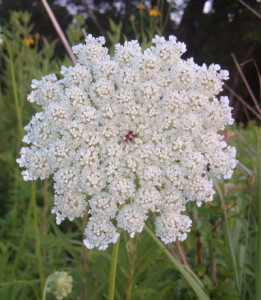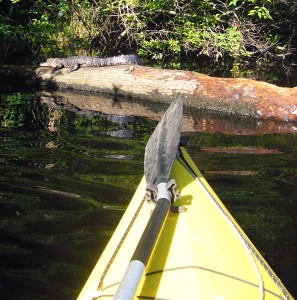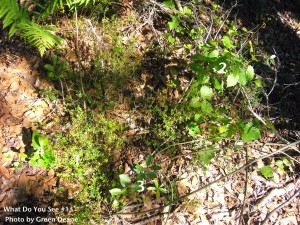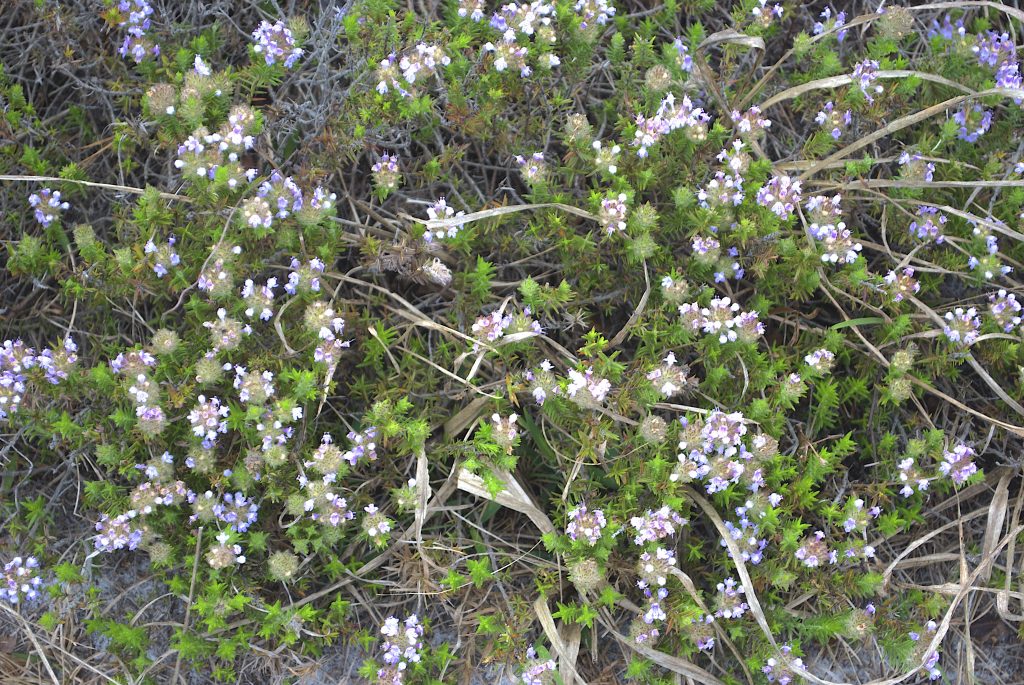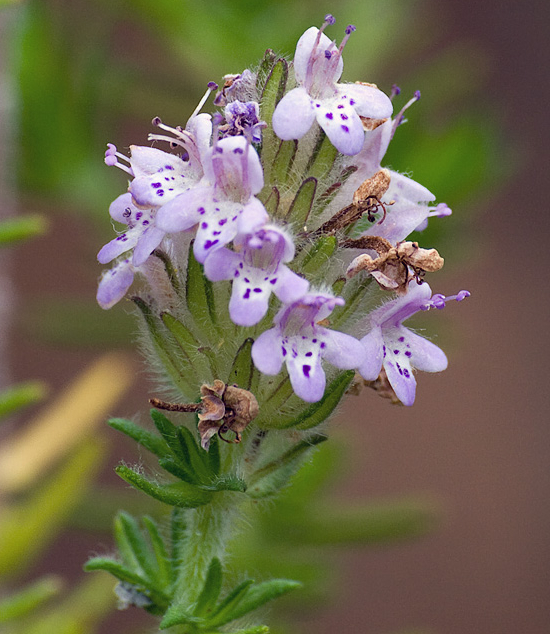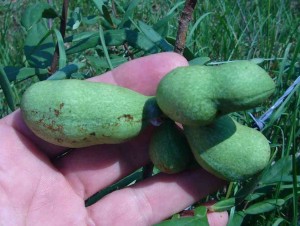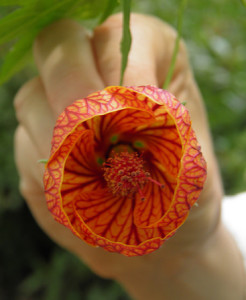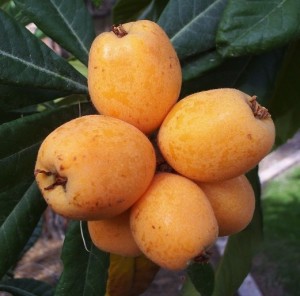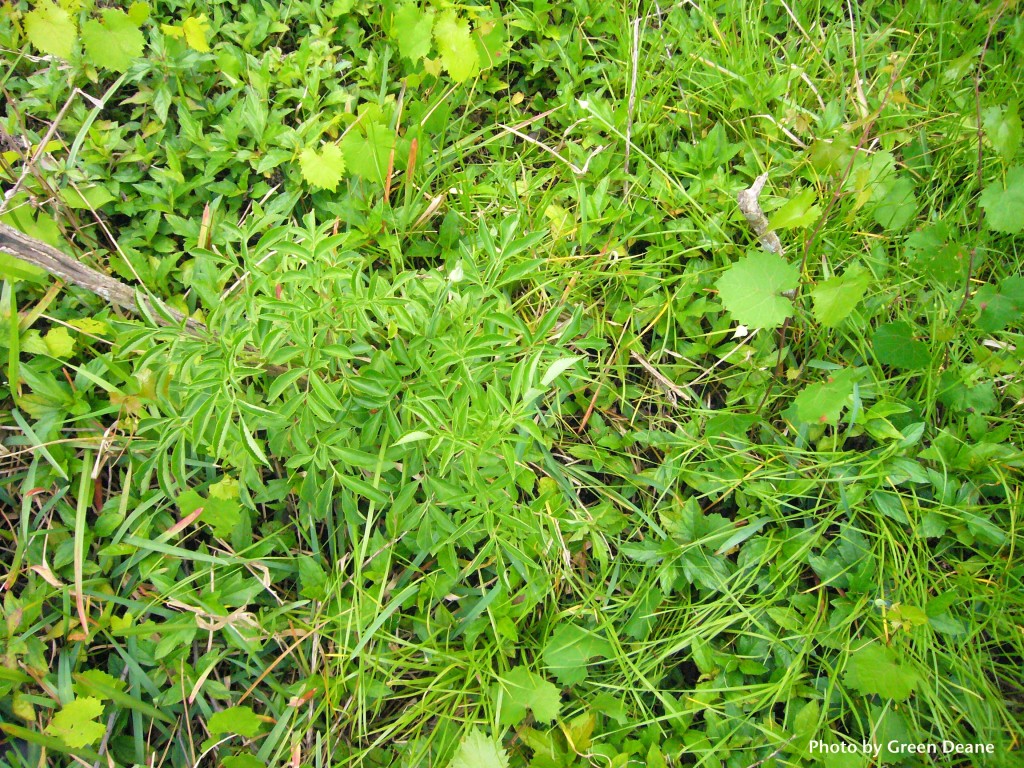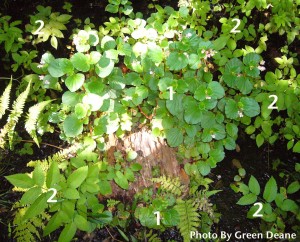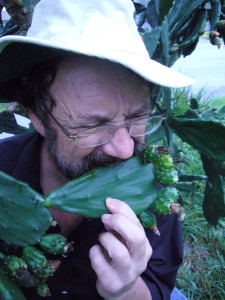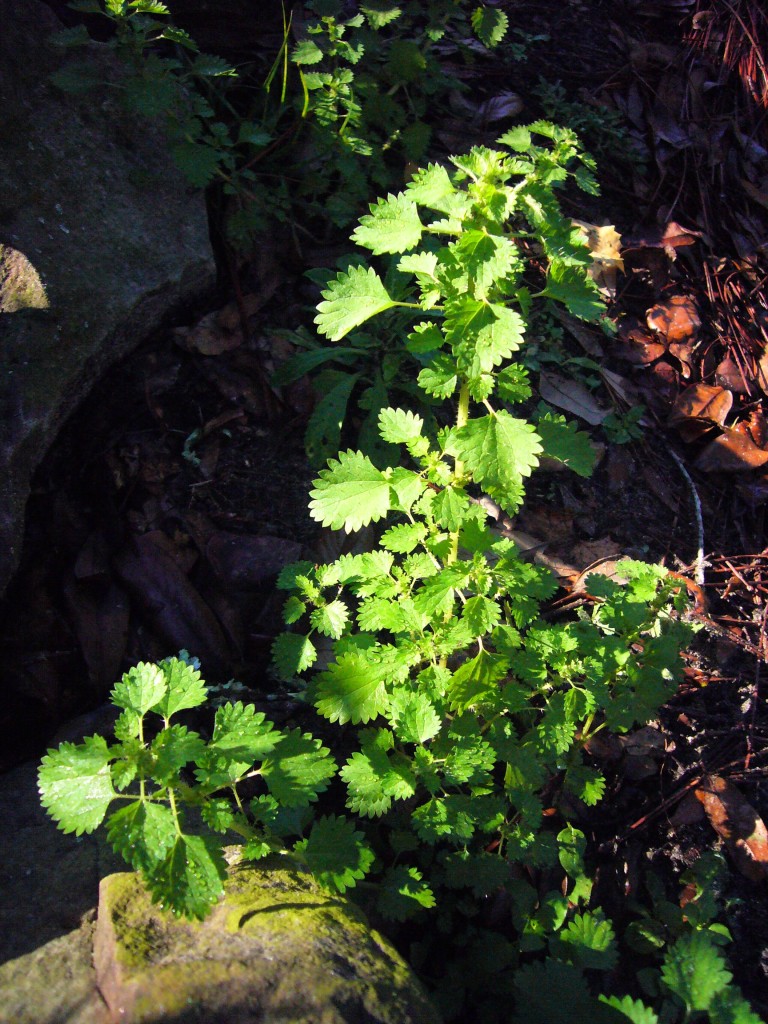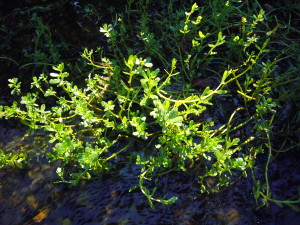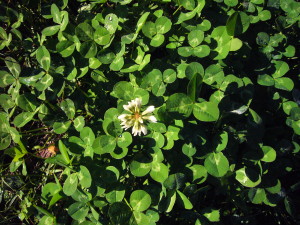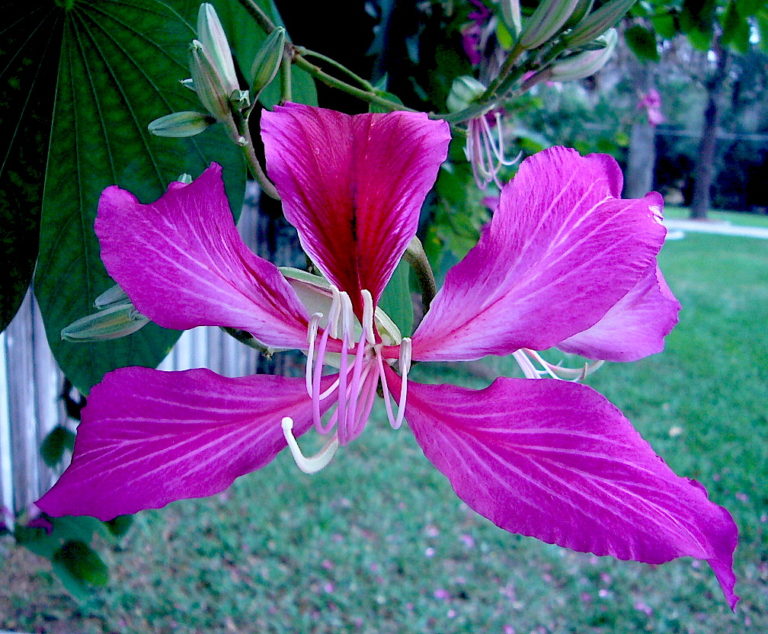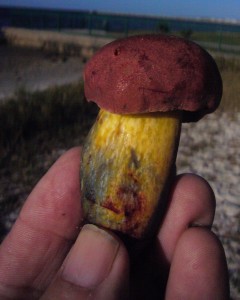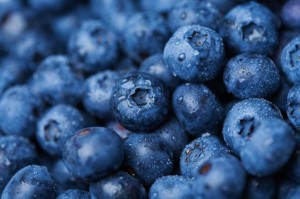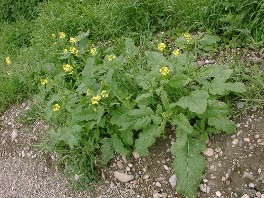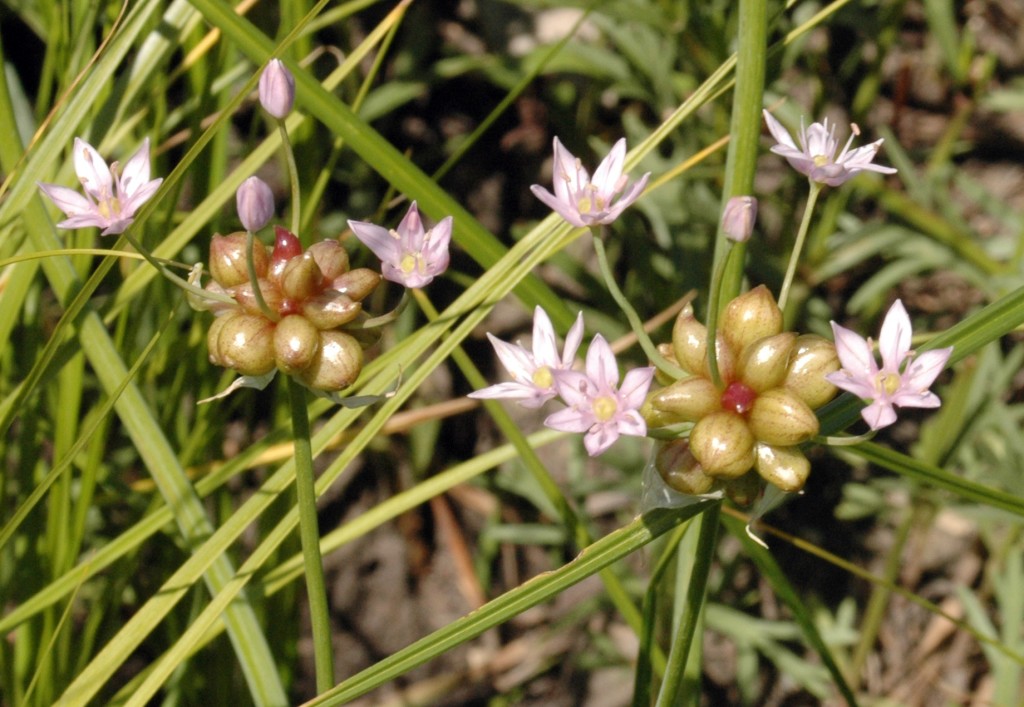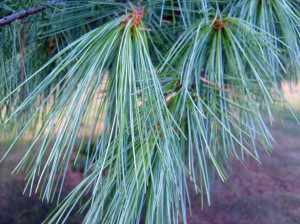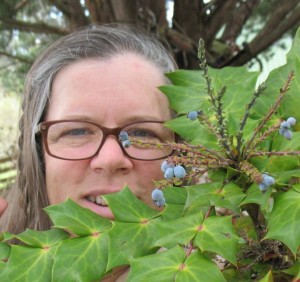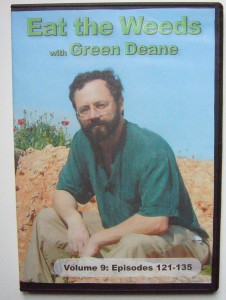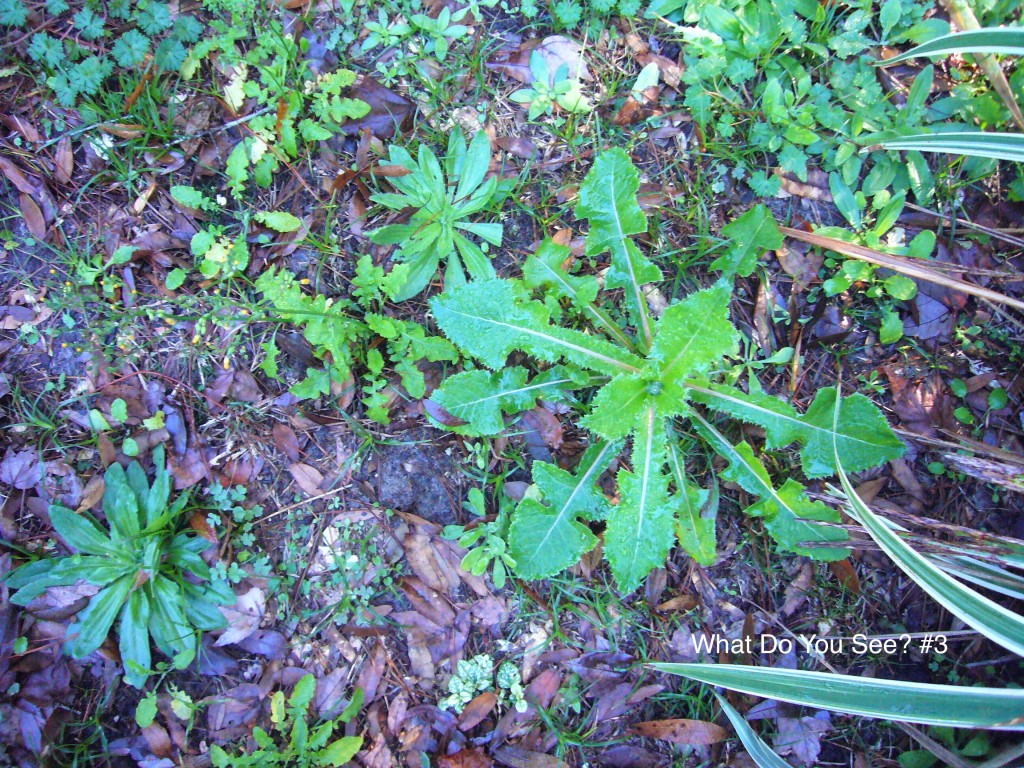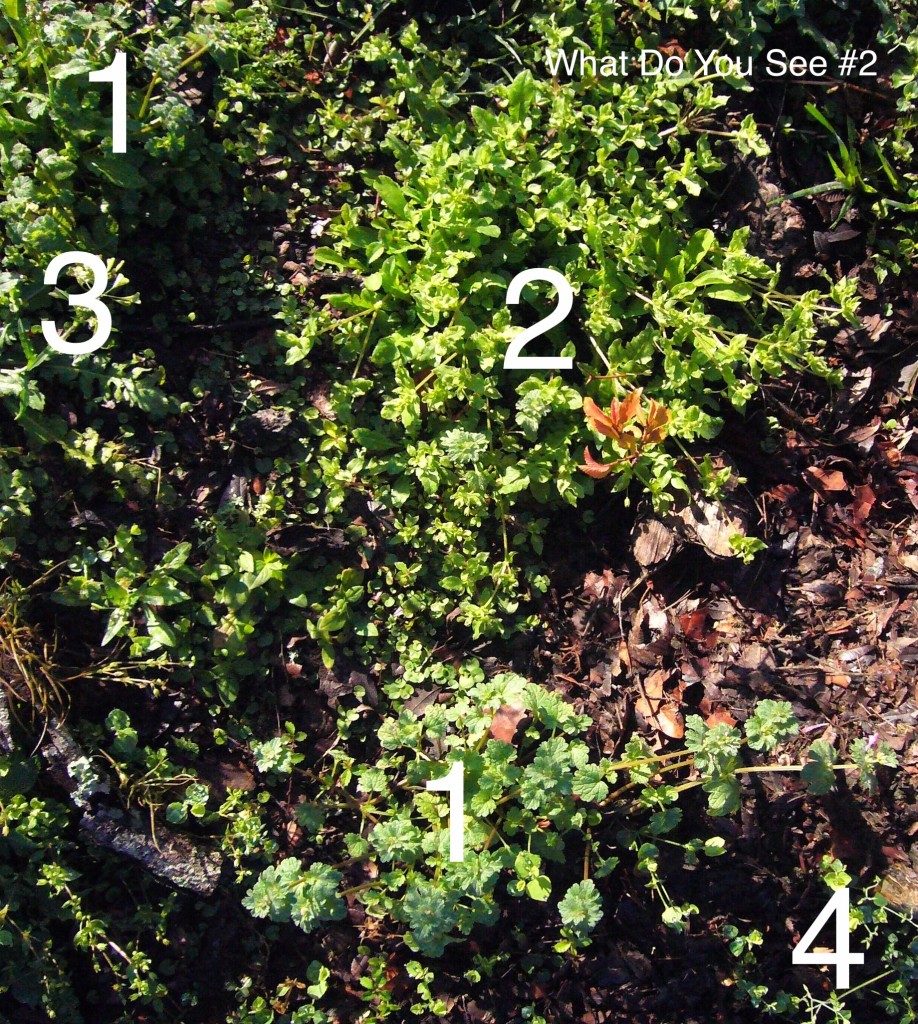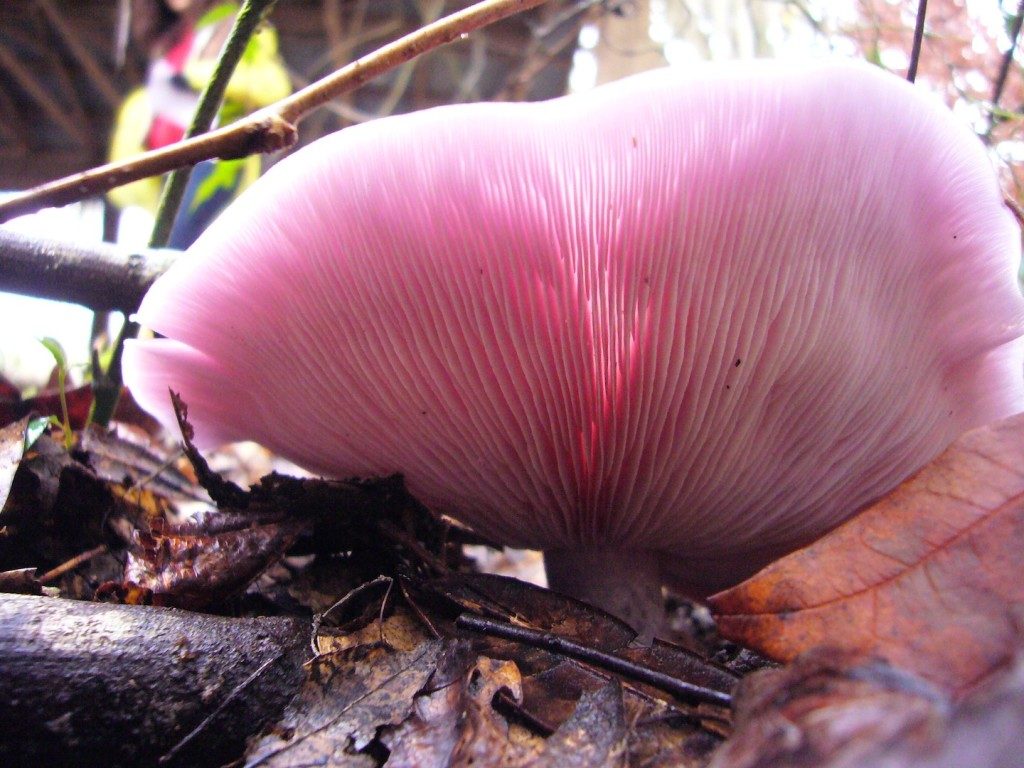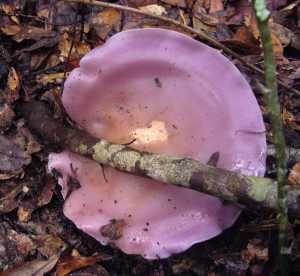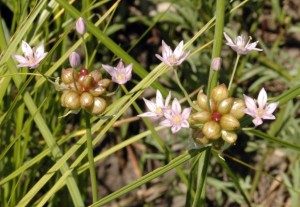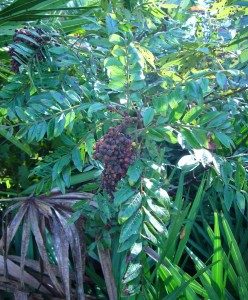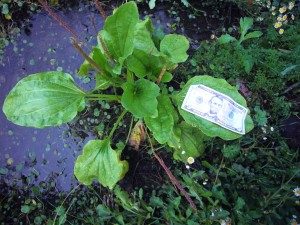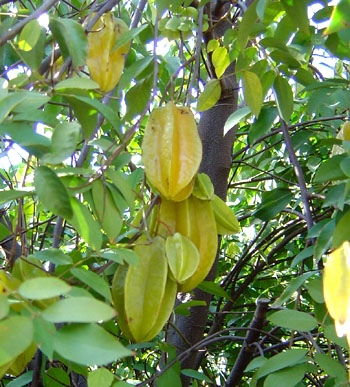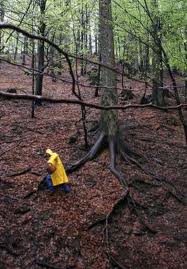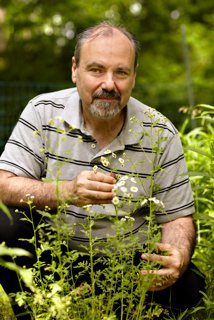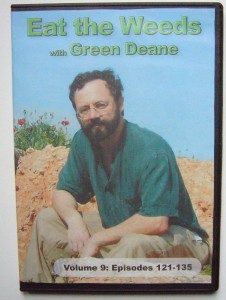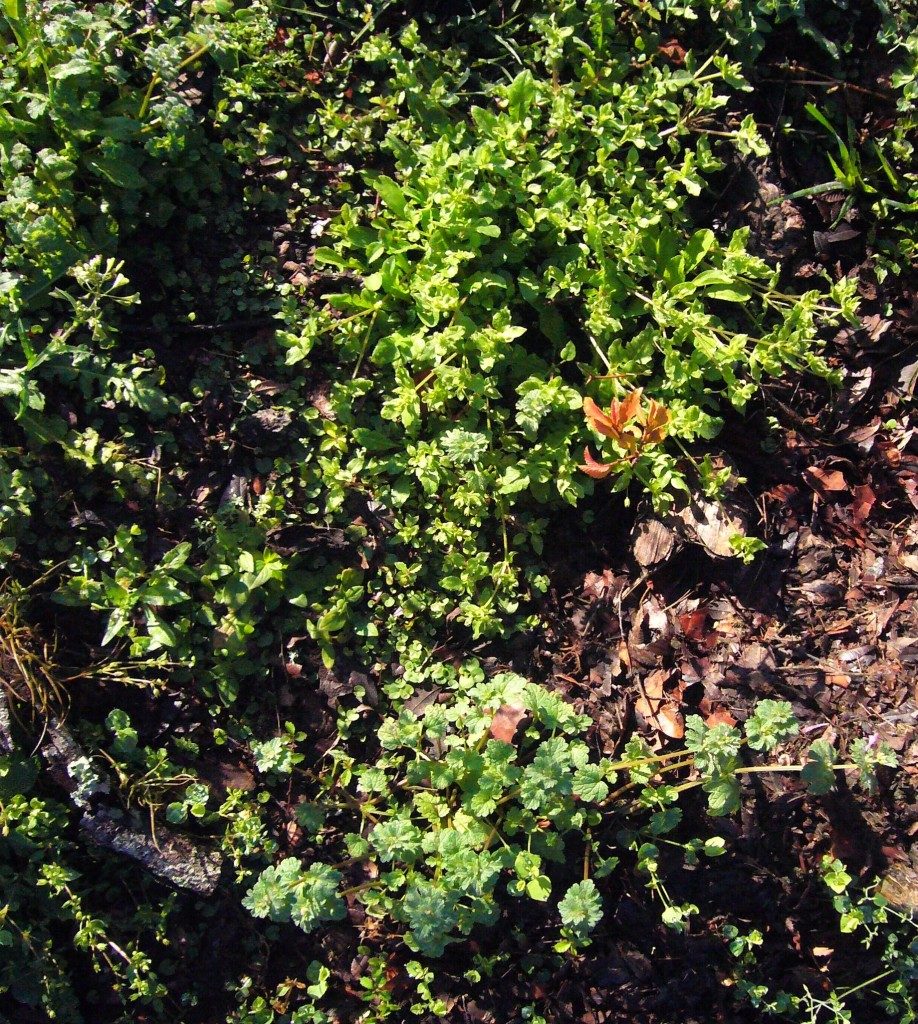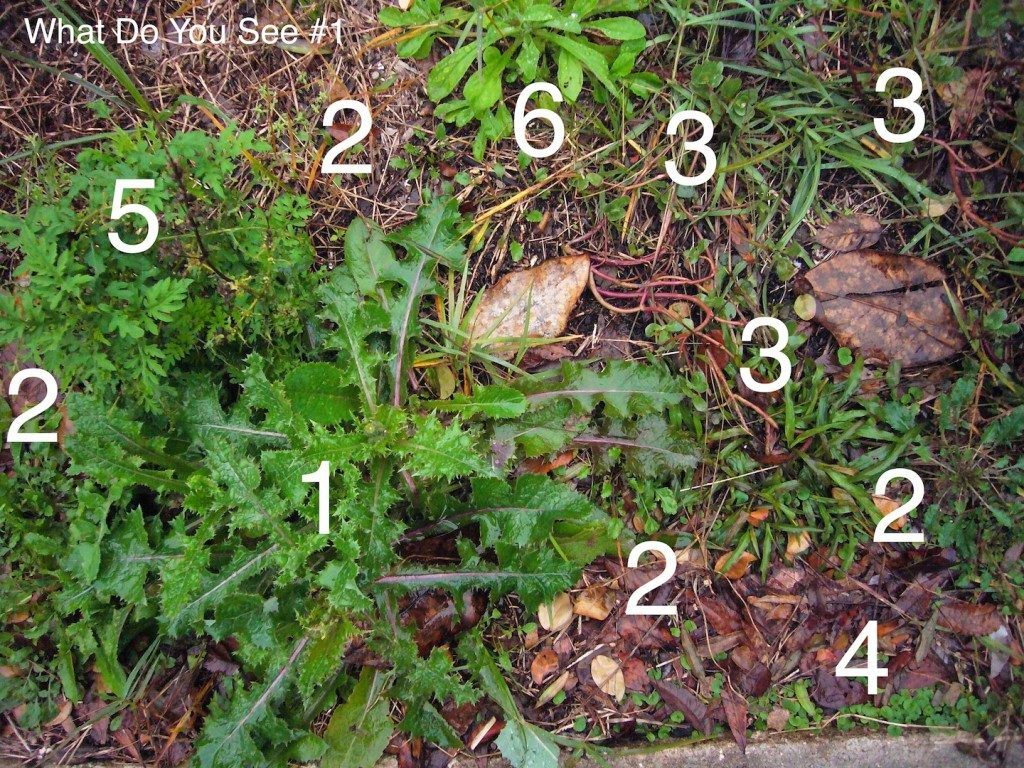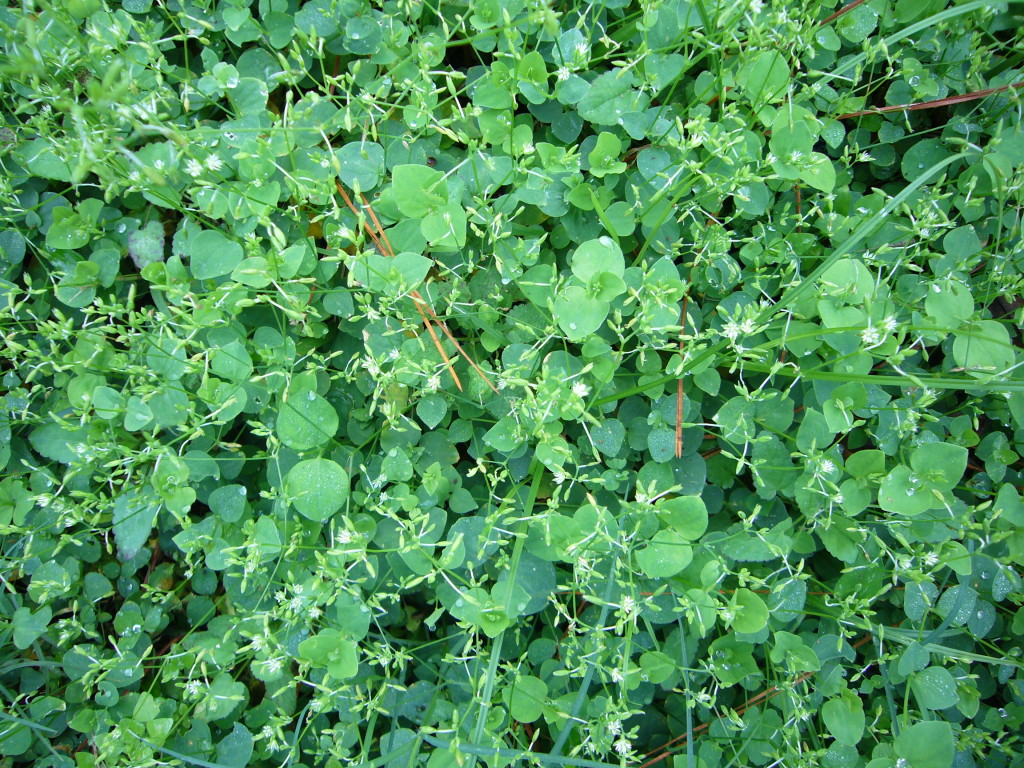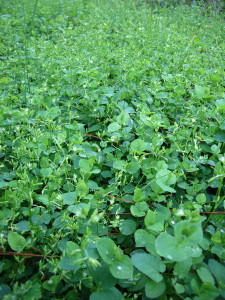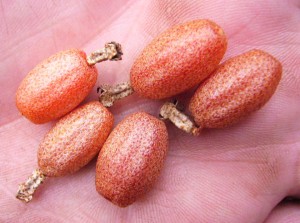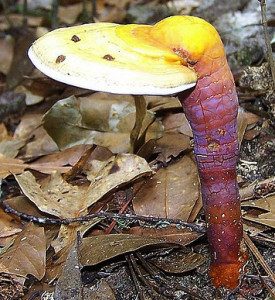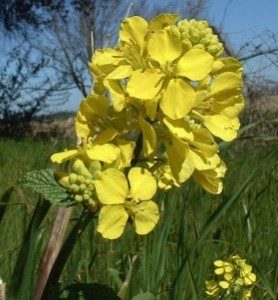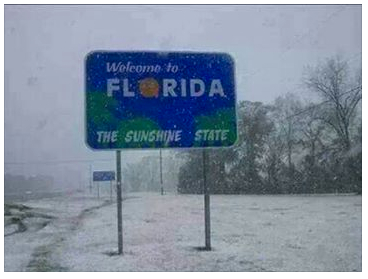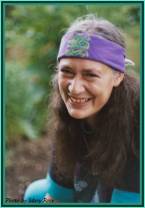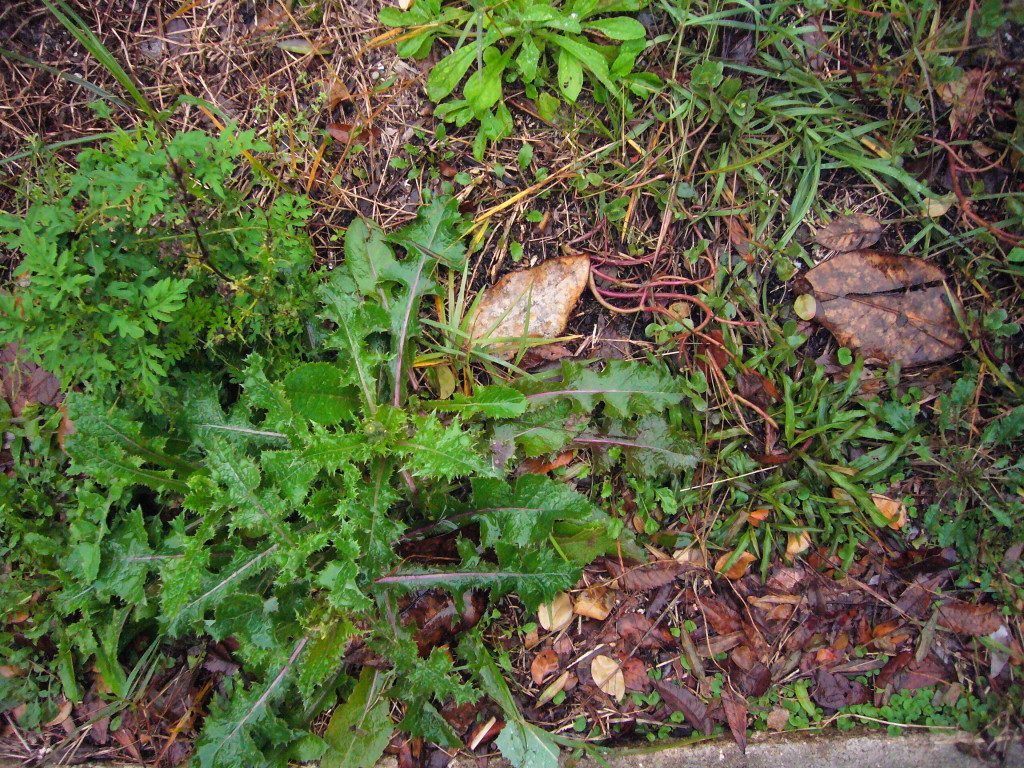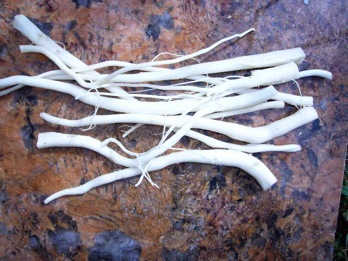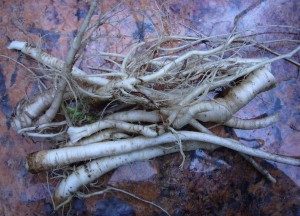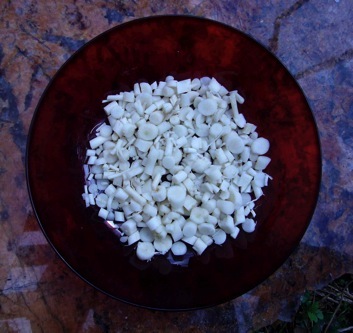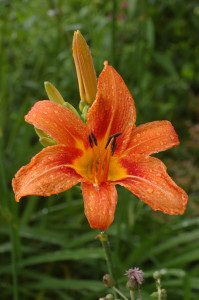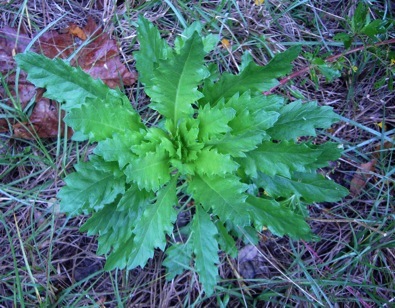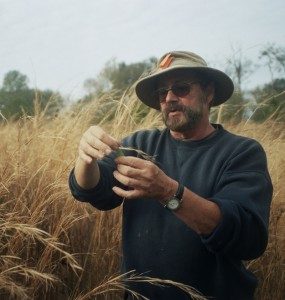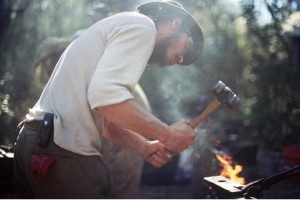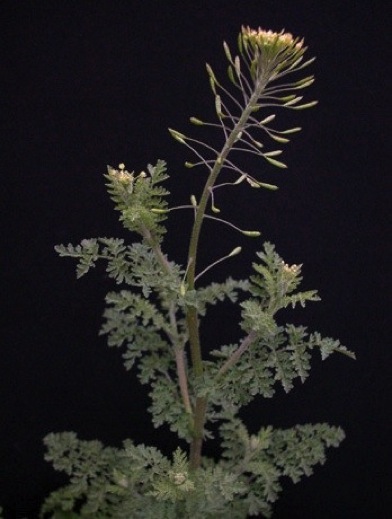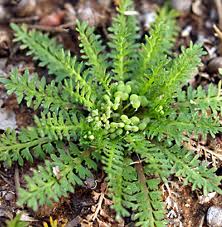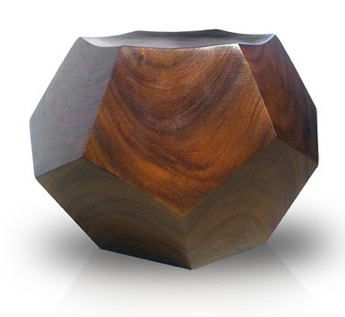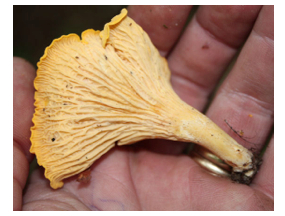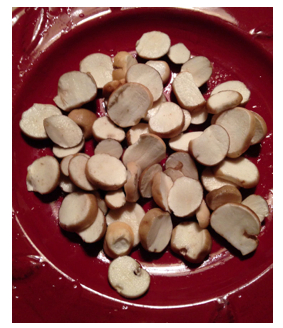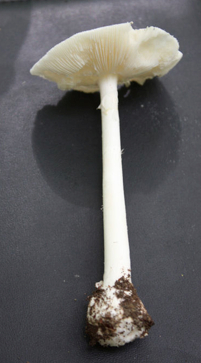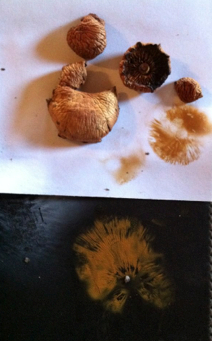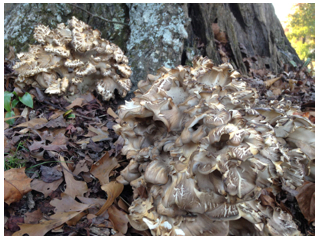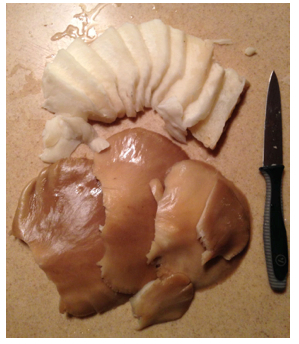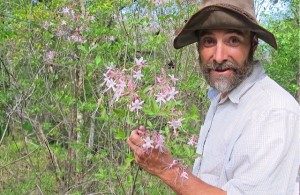It’s a yellow blur from the interstate, usually along a fence, or inside a pasture. The shrub is two or three feet high. If you stop and look, it has large, three-petaled waxy blossoms that remind you of the Magnolia. You have found a paw paw.
Paw paws are common but elusive in this part of the world. Neither rare nor prolific yet they manage to hide well, even in plain sight! Kind of like persimmons, they are wall-flowers, not showy. More so the fruit starts out green and blends in well. And about the time it ripens to light green and yellow the woodland creatures are harvesting them. Here and gone. So finding the shrub this time of year by the blossoms is the easiest way to locate them. Dry open ground is a good place to look, which is why pastures near the road are often fruitful. It is also common to find them at the base of slash pines in scrub areas. We have several different species locally from dwarf versions with red blossoms to spindly tall shrubs with creamy-yellow blossoms. You can read more about them here.
If you are one to wander around sandy scrub in Florida this time of year you will see the low blooms of the Florida Pennyroyal. It’s quite an unusual plant in that it is monotypic, meaning the only plant in its genus. It’s found along the Central Florida Ridge though I have seen it also on the east coast of the state. There are a few plants in the Bahamas and maybe one or two in southern Georgia. It has the unmistakable aroma of pennyroyal. A species that looks vaguely similar, Florida Rosemary, has no noticeable strong aroma. Florida Pennyroyal used to be the third most common nectar plant in the state but fell off for some unknown reason and was replaced by Bidens alba, the Spanish Needles. Florida Pennyroyal was used extensively by the natives and has culinary uses. To read more about it go here.
There is perhaps nor more commonly known wild weed than the Dandelion. Whether a child blowing aways the Dandelion puff or a seasoned pallet flavoring coffee with the roasted root, Dandelions are user friendly. My first batch of wine — after two five-gallon batches of beer — was Dandelion wine, made when I was in the 8th grade. It was very reasonable choice: I could not buy wine, I did not have a driver license, and Dandelions were everywhere. That was more than a half-a-century ago in Maine where summer Dandelions grew large and luscious. Now I live in Florida and Dandelions here are usually anemic winter stragglers. That first experience with a wild wine makes it easy to realize how wine-making evolved. There was no great preparation. I put blossoms, water, sugar and yeast into a 5-gallon crock, the top covered with a towel. When it was done working it went into old glass soda bottles. Perhaps it was beginners luck but it worked wonderfully. It doesn’t always, that’s for sure as subsequent failures over the years have proved. After some 50 years of wine making I am not cavalier about it but not super fastidious either. What you also learn is that most wine recipes are basically the same with minor variations. I will admit that of all my videos on You Tube the one on making a quick hard cider is the most watched. I’m probably corrupting some 8th grader out there… who might grow into a great wine maker. To learn more about Dandelions click here.
Depending on where you live foraging can be slow or hot this time of year. Locally we’re loaded with greens. Elsewhere it’s the off-season but that can be a time to study up on various plants, share experiences, and prepare for your upcoming season. On the Green Deane Forum we chat about foraging all year long. And it’s not just about warm-weather plants or just North American flora. Many nations share common weeds so there’s a lot to talk about. Recent topics include Brown Bear and Greens, Homemade Sauerkraut, Coconut Oil, Solanum sisymbrifolium seeds, Lost resource, Help IDing my random Garden Weeds, Armadillos and Leprosy, , Sprouting Palm Seeds, Plant Sources for Camphor, How California Got to Where It Is, Fire Roll, Yellowhorn (Xanthoceras sorbifolium) and What Do You See #18.
Foraging classes: Saturday, March 21st Because of a three-day event at the usual class location in Melbourne the foraging class will be moved to Melbourne’s Riverview Park, 2400 Riverview Drive, Melbourne, FL., 32901. We will meet at the pavilion. If that is occupied we will meet at the parking lot north of the pavilion. And as this is a different location the time will be later as well. Class starts at 10:30 a.m. There is no drinking water or open bathrooms at the park. The pavilion is on the south side of the park. Irwin Street borders the west, and Prospect Avenue the north. Sunday, March 22nd, Dreher Park, 1200 Southern Blvd., West Palm Beach, 33405. 9 a.m. Sunday, April 5th, Bayshore Live Oak Park, 23000 Bayshore Rd., Port Charlotte, FL 33980, 9 a.m. Also note on April 4th I will be teaching with several others at an annual event at Bamboo Grove in Arcadia Florida. You can learn more about that event by visiting Andy Firk’s facebook page.
 By now a lot of you are feeling poorly and we know why: Daylight Saving Time. I so dislike the time change that many years ago I simply stopped doing it. I refuse to change times seasonally. I no longer leap forward in the spring and fall back in the fall. I do not change my clocks or schedule at all. I eat at the same time, go to bed and get up at the same time, in short I do not change with the rest of the time-flipping world. Personally, I really don’t care if we use standard/solar time or daylight savings time permanently. It’s the flipping I can’t stand. I got two copies of the time gene and they rebel. After all, there are only so many hours of daylight and changing a clock does not create any more, or less. So I stay on standard/solar time, and I remind myself that the rest of the world is delusional thinking it’s an hour ahead of me.
By now a lot of you are feeling poorly and we know why: Daylight Saving Time. I so dislike the time change that many years ago I simply stopped doing it. I refuse to change times seasonally. I no longer leap forward in the spring and fall back in the fall. I do not change my clocks or schedule at all. I eat at the same time, go to bed and get up at the same time, in short I do not change with the rest of the time-flipping world. Personally, I really don’t care if we use standard/solar time or daylight savings time permanently. It’s the flipping I can’t stand. I got two copies of the time gene and they rebel. After all, there are only so many hours of daylight and changing a clock does not create any more, or less. So I stay on standard/solar time, and I remind myself that the rest of the world is delusional thinking it’s an hour ahead of me.
I don’t watch TV so that doesn’t influence me. When I worked for a company I simply went to work an hour earlier for half a year. I did not eat lunch on their schedule but rather mine. If I have an appointments I just make note it’s actually an hour earlier: Noon their time, 11 mine. In my personal life, habits, and space, I don’t change. As I write my computer, slave to its programming, tells me it is almost 1900, or 7 p.m. The sun tells me nonsense, it’s six p.m. and time to feed Cous-Cous and Oliver Whitecat, my ever-faithful assistant and supervisor. More so, the atomic clocks that regulate time down to the millionth of a second don’t leap forward or fall back. They stay on solar time. The animals stay on solar time. Mother nature stays on solar time. Only humans play the silly game. Only the government would cut the bottom foot off a blanket, sew it on the top, and then argue the day is longer. In fact Asia and Africa do not change time, nor most of Arizona and Hawaii. Sensible folks, them Arizonans and Hawaiians. Studies also show DST does not save energy and cost more than not changing. You can read more about the history of this nonsense here.
I also use my watch for a compass. It works best on solar time. If I change it to Daylight Savings Time, south becomes 11 instead of 12….truly bizarre, and I’d be way off my mark. I am not a perfectionist but the sun at 11 just doesn’t work for me. 12 is just right. So I stay on solar time…. in tune with the cosmos and my location on the rotation. And when interacting with the world gone flipping mad, I just tell myself they are wrong. It all works out rather well….. almost. The only problem is my cat constituency. They know when the rest of the world leaps forward, prompting them to demand to be fed an hour earlier. I don’t know how they know but they do….
When foraging you do have to be careful and look twice. There’s a good reason for that in What Do You See #19.

